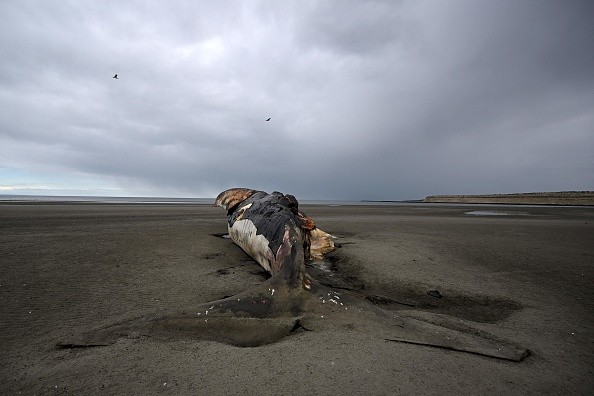Plastic and microplastic pollution have been major concerns, affecting humans, animals, and the environment. Recent research raised concerns over the impact of microplastics on blue whales.

The study showed that the gigantic blue whales suffered from daily microplastic pollution. The study found that blue whales consumed up to 10 million microplastic pieces.
On the other hand, the research noted the worsening plastic pollution that can harm many aquatic animals, including blue whales.
The World Wildlife Fund (WWF) explained that blue whales are considered endangered.
It further explained that blue whales are the largest animal on Earth. Known as Balaenoptera musculus, blue whales can reach up to 200 tons, with a length of up to 80 to 100 feet.
The WWF added that blue whales play a crucial role in the oceans or marine environment.
However, blue whales are also under threat. Endangered blue whales are impacted by climate change and habitat loss. As a result, the conservation of blue whales is important for the oceans.
Furthermore, microplastic pollution has been a concerning issue. The massive production of plastics could impact animals.
According to the National Geographic, microplastics are the products of larger plastics, proving to be harmful to animals' health and survival.
The National Geographic explained that microplastics were also found in marine organisms, including whales.
Microplastics could have disastrous effects on the ocean and aquatic animals due to the excessive production of larger plastics.
Whales and microplastics
The research noted that microplastic pollution could threaten the health of blue whales. The research study was published in Nature Communications journal and on the Phys.org website.
The researchers observed the whales by putting tags on 191 blue and humpback whales found on California's coast. Then, the researchers looked into the mouthfuls of the said whales.
- The researchers said that blue whales ate over 10 million microplastic pieces (daily). The researchers added that whales consume up to 43.6 kilograms daily, making them the biggest microplastic consumers.
- For 90 to 120 feeding seasons, the total amount of microplastics could reach up to billion pieces (a year)
- Meanwhile, the report noted that humpback whales recorded up to four million pieces of microplastic (daily).
- The researchers added that the prey of the whales had microplastic present in them.
- Because the researchers determined that blue whales are the biggest microplastic consumers, their next approach is investigating the harm or effect on the largest animal.
Microplastics impact
The study's first author, Shirel Kahane-Rapport, explained that that result was concerning because humans eat the same prey, including sardines and anchovies.
Rapport is also from California State University.
Meanwhile, the UN Environment Programme recognized plastics as a global problem, affecting animals and their habitats. The report also noted that plastic pollution could also impact livelihood due to its effect on the environment.
Furthermore, the National Geographic explained that plastic production would increase or double by 2050. The article noted that an estimated least eight million tons of plastic managed to enter the oceans.
© 2025 NatureWorldNews.com All rights reserved. Do not reproduce without permission.





